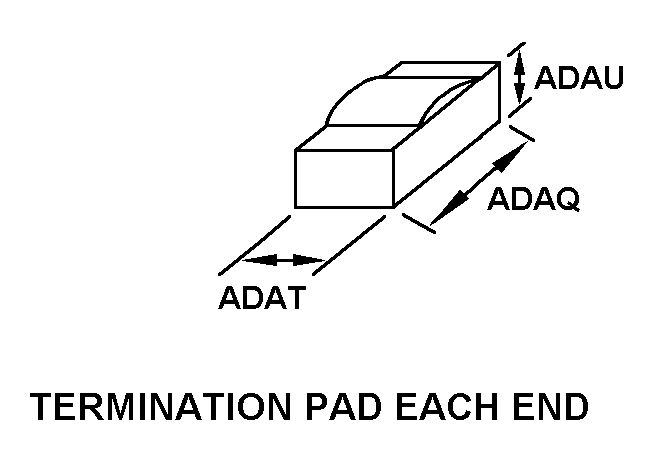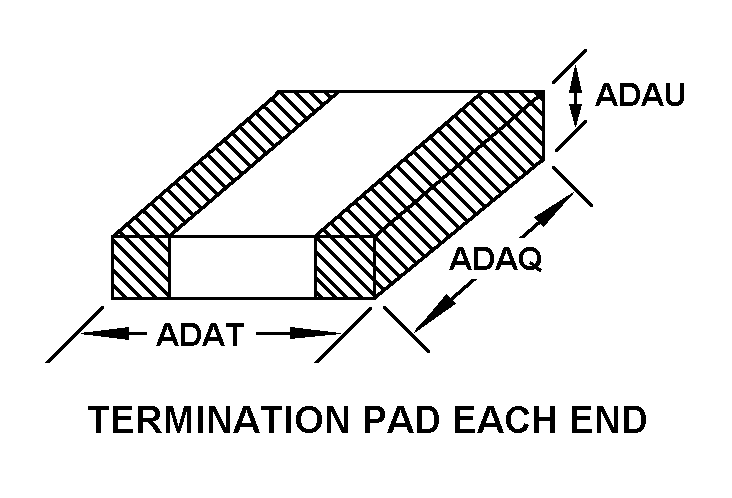5905012758163
Price Quote Get an up to date pricing and availability quote for this product. Order online or over the phone.
Quality Commitment
Serving our customers with quality and safety first.
- AS9120 Certified
- Audited supply chain
- ITAR Registered
- DDTC Registered
- HAZMAT Certified
- Customer service objectives
- Every product 100% inspected

5905-01-275-8163 Specification Set by the OEM (see RNCC code 3)
-100.0 to 100.0
191.000 ohms
-1.000 to 1.000
70.0
150.0
-55.0 to 150.0
uninclosed
terminal type per body style
established
0.010
0.045in. and 0.060in.
0.070in. and 0.080in.
0.010in. and 0.040in.
0.100 free air
a/F-18-Dcn
0.01 grams
termination pad each end
81349-MIL-R-55342 specification (includes engineering type bulletins, brochures, etc., that reflect specification type data in specification format; excludes commercial catalogs, industry directories, and similar trade publications, reflecting general type data on certain environmental and performance requirements and test conditions that are shown as "typical", "average", "", etc.) .
81349-MIL-R-55342/6 government specification
Cross Reference Parts Part numbers that meet the specification outlined on this page and set by the OEM
Identification Item Identification Guide (IIG) and Item Name Code (INC)


Definition Definition of approved item name (AIN): "RESISTOR,FIXED,FILM"
A resistor whose ohmic value cannot be adjusted or varied. The resistance element consists of either a thin layer of conductive material, containing either binders or insulating materials, deposited on an insulated form; or an alloy of metal and ceramic materials, usually fused to an insulated form. Opposition to the flow of current is an inherent property of the materials used and is manifest by the heat dissipation in the resistor. See also attenuator, fixed and resistor, fixed, composition. Excludes carbon composition type resistors.
Related NSNs
Indicates that the item represented in the input/output header is the preferred replacement item master nsn in the i&s family and is suitable for the item(s)in segment h. use the item represented by the nsn in segment h if technically acceptable for your specific application. the replacement item, master nsn in the i&s family, will be issued when the supply of the replaced item(s) is exhausted. must be used in combination with phrase code f.
Relationship Codes
OOU: Order of Use. Three position alpha code denoting the interchangeability and substitutability (I&S) relationship of a national stock number within a service/agency I&S family.
JTC: Jump to Code. Three position alpha code that denotes an exception to the normal sequence to be followed in the attrition of items within an interchangeability and substitutability (I&S) family.
Phrase Code: A one position code assigned to a phrase used in the management data list to denote changes and/or relationships between national stock numbers and reference data.
Packaging & Dimensions Packaging instructions, special markings, and approx. weight/dims
Special requirement. see specific instructions or drawings provided.
All packaging data is mandatory for compliance and no substitutions are permitted. fast packs should be included in this category.
Special requirements.
Packaging Codes
OPI: Optional Procedure Indicator Code. A one position alpha code that indicates the allowable deviations from the prescribed requirements.
SPI No.: Special packaging instructions number.
LVL A/B/C: Indicates the type of shipping container required for level A, B, or C maximum packing protection.
SPC Mkg: A two position code that identifies the special markings applied to the container, which is part of the total pack to protect the contained item during preservation, packing, storage, transit and removal from the pack.
5905-01-275-8163 Material Hazmat, Precious Metals, Criticality, Enviroment, and ESD
Indicates there is no data in the hmirs and the nsn is in a fsc not generally suspected of containing hazardous materials.
Item does not contain precious metal.
The item does not have a nuclear hardened feature or any other critical feature such as tolerance, fit restriction or application.
Identification Codes
HMIC: Hazardous Material Indicator Code. A one position code that identifies a hazardous item.
PMIC: Precious Metal Indicator Code. A one position code which identifies items that have precious metals as part of their content. precious metals are those metals generally considered to be uncommon, highly valuable, and relatively superior in certain properties such as resistance to corrosion and electrical conductivity.
ESD: Electrostatic Discharge. Indicates if an item is susceptible to electrostatic discharge or electromagnetic interference damage. electrostatic discharge damage occurs when an accumulation of static electricity generated by the relative motion or separation of materials is released to another item by direct contact. electromagnetic interference damage occurs when an item comes into proximity with an electrostatic or magnetic field.
ENAC: Enviromental Attribute Code. Identifies items with environmentally preferred characteristics.
CRITL: Criticality Indicator Code. Indicates an item is technically critical by tolerance, fit, application, nuclear hardness properties, or other characteristics.






